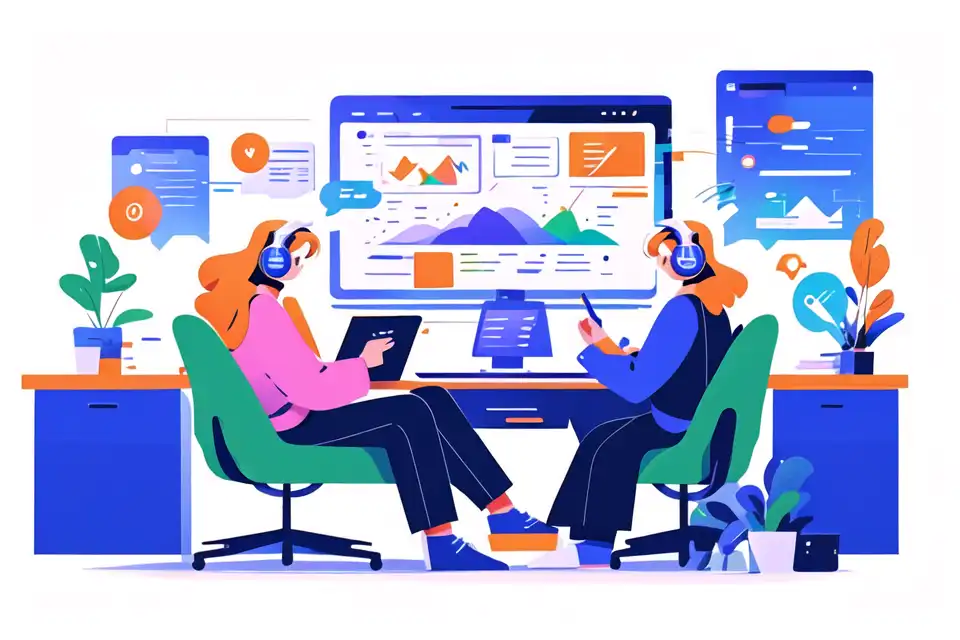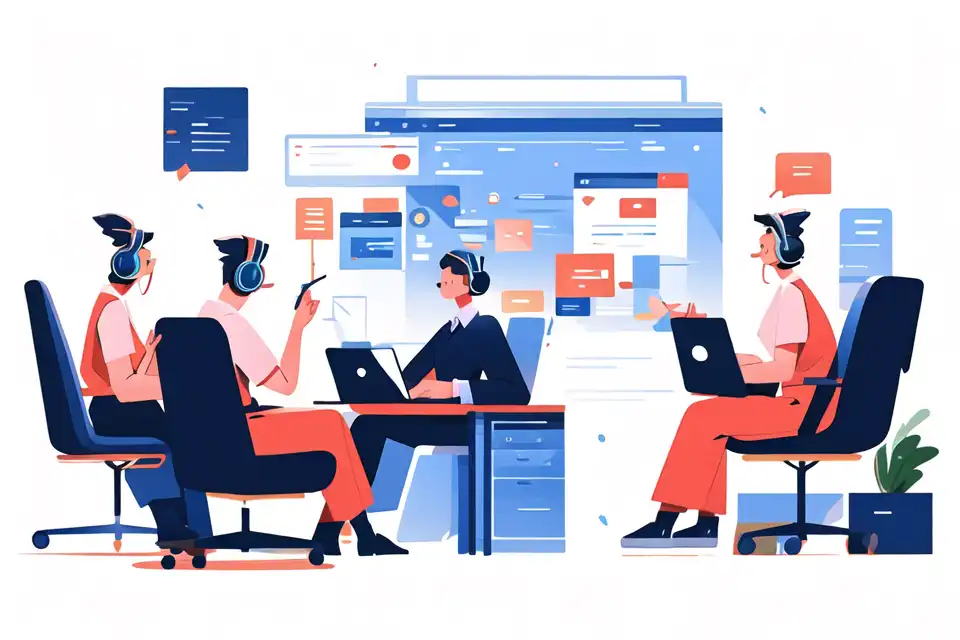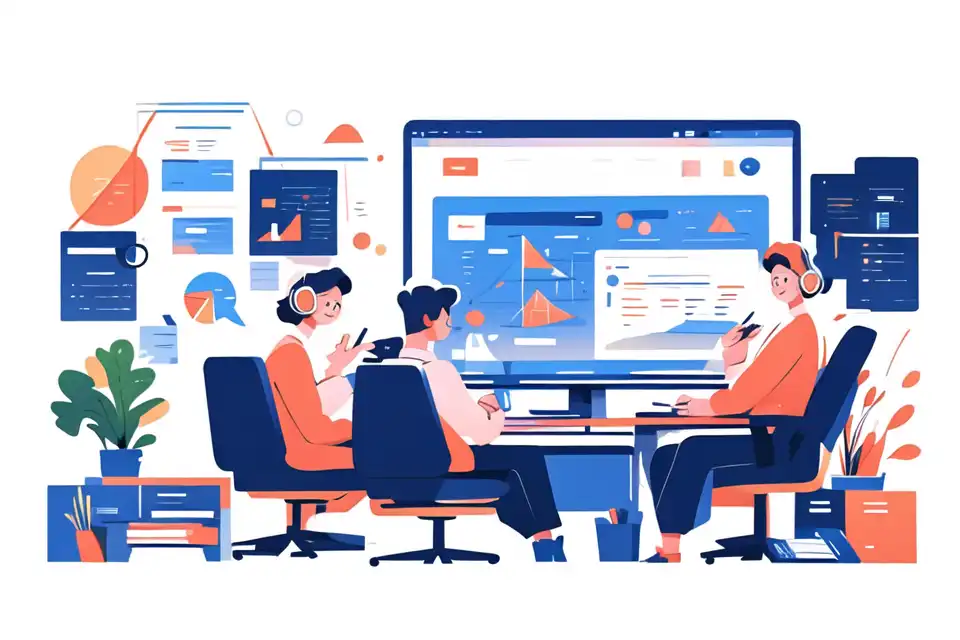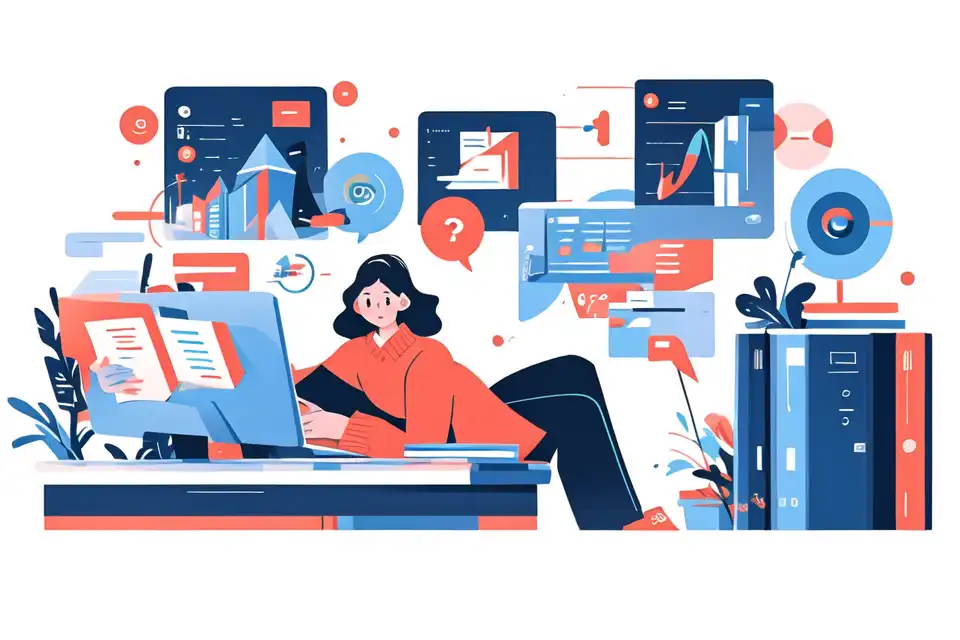Virtual Classroom Software
Learn about the top tips and strategies in virtual classroom software
Try Lark for Free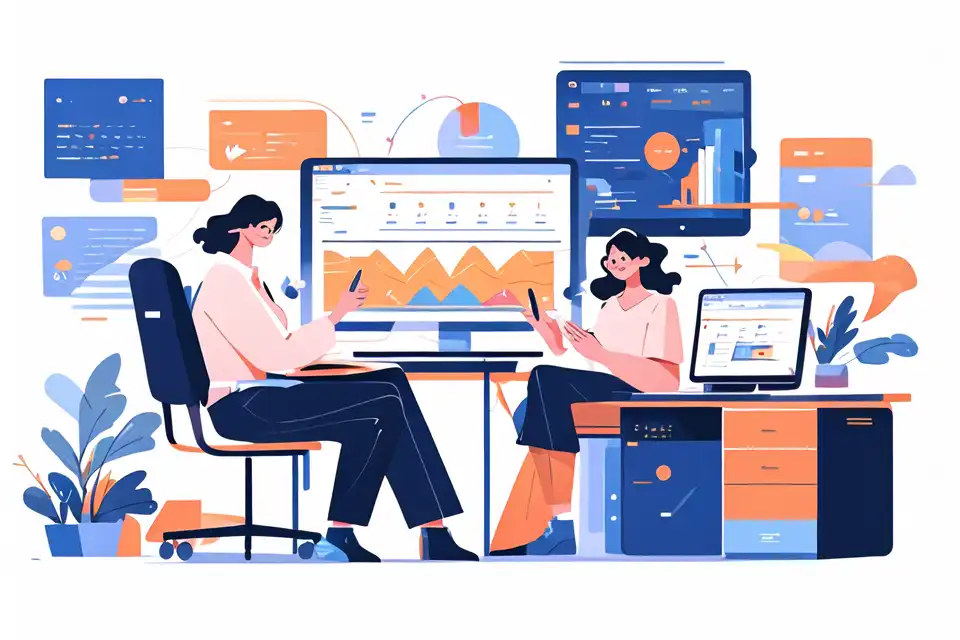
Virtual classroom software represents a significant paradigm shift in the educational landscape. It's more than just a technological trend—it is a strategic tool that has revolutionized the traditional learning environment, making education more accessible, flexible, and engaging.
The evolution of virtual classroom software chronicles a compelling journey from static e-learning platforms to interactive, collaborative learning environments. Fueled by advancements in technology and the increasing ubiquity of the internet, virtual classroom software has evolved into a dynamic platform that facilitates real-time interaction, engagement, and collaboration among students and teachers, transcending geographical boundaries.
Virtual classroom software is reshaping modern learning environments. It epitomizes the convergence of technology and education, breaking down the walls of traditional classrooms and creating a borderless, virtual learning space. Today, it's not uncommon to find students in different corners of the globe participating in a live online class, collaborating on projects, or engaging in peer-to-peer learning.
Recent statistics indicate an intriguing trend in the adoption of virtual classroom software. According to a report by MarketsandMarkets, the global virtual classroom market size is expected to grow from USD 9.3 billion in 2018 to USD 19.6 billion by 2023, at a Compound Annual Growth Rate (CAGR) of 16.2% during the forecast period.
Unlock the power of Lark to elevate your business operations. Discover actionable strategies and best practices in our comprehensive guide.
Benefits of virtual classroom software
The adoption of virtual classroom software brings a plethora of benefits that transform teaching and learning experiences. It introduces new pedagogical strategies, fosters greater student participation, and enhances learning outcomes.
Virtual classrooms serve as a catalyst for interactive, student-centered learning. This software provides a range of tools and features—such as whiteboards, breakout rooms, and live quizzes—that encourage students to participate actively in the learning process. Teachers can also use these tools to deliver personalized instruction, catering to the unique learning needs and styles of each student.
There is a strong correlation between the use of virtual classroom software and enhanced student engagement and outcomes. A study by the U.S. Department of Education found that students in online learning conditions performed better than those receiving face-to-face instruction. This can be attributed to the interactive nature of virtual classrooms, which engage students in a way traditional classrooms often can't.
Implementing virtual classroom software in education
Integrating virtual classroom software into the curriculum requires careful planning, strategic implementation, and continuous evaluation. It's not just about choosing the right software but also about ensuring that it aligns with your educational objectives and enhances the learning experience.
Here are essential steps to integrate virtual classroom software into the curriculum:
-
Identify your needs: Assess what you want to achieve with the virtual classroom software. This could range from enhancing student engagement to facilitating collaborative learning or offering flexible learning options.
-
Choose the right software: Evaluate various virtual classroom software based on features, usability, compatibility, support, and pricing. Make sure it meets your identified needs and enhances the teaching and learning experience.
-
Prepare for implementation: Develop a comprehensive plan for implementing the software. This should include timelines, roles and responsibilities, training sessions for teachers and students, and a contingency plan in case of technical issues.
-
Monitor and evaluate: Regularly monitor the use of the software and gather feedback from teachers and students. Evaluate its impact on teaching and learning, and make necessary adjustments to maximize its benefits.
The proper use of virtual classroom software also requires the availability of essential tools and resources. This includes reliable internet connectivity, compatible devices, and technical support. Teachers need to be trained on how to use the software effectively, and students need to be oriented on how to navigate the virtual classroom.
Learn more about Lark can help you with everything mentioned so far in the article.
Case studies and real-world examples of virtual classroom software in action
Let's take a look at how virtual classroom software has been successfully implemented in educational institutions.
Case Study 1: A university in Asia wanted to expand its reach and offer flexible learning options to its students. It adopted a virtual classroom software, which allowed it to conduct live, interactive online classes, record sessions for later viewing, and facilitate collaborative learning among students. The result? Increased student enrollment, improved student satisfaction, and enhanced learning outcomes.
Case Study 2: A primary school in Europe was looking for ways to enhance student engagement and make learning more fun. It decided to use a virtual classroom software that included gamified learning activities. The teachers were able to design engaging, interactive lessons, and the students were more motivated to participate in the classes. The school reported a significant increase in student engagement and academic performance.
These case studies demonstrate the transformative potential of virtual classroom software when implemented strategically. It's not just about adopting the software—it's about adapting it to your unique educational context and leveraging its features to enhance teaching and learning.
Challenges and solutions in adopting virtual classroom software
While virtual classroom software offers numerous benefits, its adoption is not without challenges. These can range from technical issues to resistance from teachers and students.
One common challenge is the lack of technical skills among teachers and students. This can be addressed through comprehensive training sessions and continuous technical support. It's also important to choose a user-friendly software that minimizes the learning curve.
Another challenge is the initial resistance to change. This can be mitigated by involving teachers and students in the decision-making process, explaining the benefits of the software, and providing them with the necessary support during the transition period.
Lastly, there may be issues related to internet connectivity or availability of compatible devices. These can be addressed by exploring different connectivity options, procuring necessary devices, or adopting a blended learning approach that combines online and face-to-face instruction.
Learn more about Lark can help you with everything mentioned so far in the article.
The future of virtual classroom software in education
Virtual classroom software is not just a passing trend—it is here to stay, and its influence on education is set to grow exponentially in the future.
Emerging trends and innovations in virtual classroom software include the integration of artificial intelligence (AI) and machine learning, which can provide personalized learning experiences, predictive analytics, and intelligent tutoring systems. The adoption of virtual reality (VR) and augmented reality (AR) in virtual classrooms is another trend to watch out for, as they offer immersive learning experiences that can enhance student understanding and engagement.
As for predictions, it's safe to say that virtual classroom software will continue to play a prominent role in the future of education. It will drive the shift towards more personalized, interactive, and flexible learning environments. It will facilitate lifelong learning and adapt to the evolving learning needs and styles of students. Indeed, the future of education is virtual, and virtual classroom software is leading the way.
Conclusion
The adoption of virtual classroom software is more than just a trend—it's a strategic move that can transform teaching and learning experiences, enhance student engagement and outcomes, and redefine the future of education.
As we have seen, virtual classroom software brings a plethora of benefits, but its successful implementation requires careful planning, strategic implementation, and continuous evaluation. It's about choosing the right software, ensuring it aligns with your educational objectives, and leveraging its features to enhance the learning experience.
The case studies and examples presented in this article demonstrate the transformative potential of virtual classroom software when implemented strategically. They also highlight the challenges that may arise and how to address them.
In conclusion, the imperative to embrace virtual classroom software in education is clear. It's not just about keeping up with the trends—it's about preparing for the future, enhancing the learning experience, and shaping the future of education.
Learn more about Lark can help you with everything mentioned so far in the article.
Three detailed examples of virtual classroom software applications
Enhancing interactivity in learning through virtual classroom software
Enhancing interactivity in learning through virtual classroom software
Take, for example, a teacher who wants to make her online history lesson more interactive. She uses the whiteboard feature of the virtual classroom software to draw a timeline and invites students to add significant historical events to it. She also uses the live quiz feature to conduct a quick recap of the lesson, with students answering in real-time. The lesson becomes more interactive, and the students are more engaged in the learning process.
Streamlining assessment and feedback with virtual classroom software
Streamlining assessment and feedback with virtual classroom software
Consider a teacher who needs to assess the progress of his students in an online math course. He uses the virtual classroom software to conduct online tests, with automatic grading and instant feedback. He also uses the software to provide personalized feedback to each student, identifying their strengths and areas for improvement. The assessment process becomes more efficient, and the students get timely feedback that helps them improve their learning.
Fostering collaboration and engagement with virtual classroom software
Fostering collaboration and engagement with virtual classroom software
Imagine a group of students working on a science project. They use the breakout rooms feature of the virtual classroom software to collaborate in small groups. They also use the shared documents feature to work on the project simultaneously, discussing ideas and making revisions in real-time. The project becomes a collaborative effort, and the students are more engaged in the learning process.
Related:
Education Solution | LarkLearn more about Lark can help you with everything mentioned so far in the article.
Dos and don'ts for virtual classroom software
| Do's | Don'ts |
|---|---|
| Do involve teachers and students in the decision-making process. | Don't ignore the technical requirements of the software. |
| Do provide comprehensive training and continuous support. | Don't overlook the importance of planning and preparation. |
| Do monitor the implementation and make necessary adjustments. | Don't resist change but embrace it as a strategic move. |
Unlock the power of Lark to elevate your business operations. Discover actionable strategies and best practices in our comprehensive guide.

